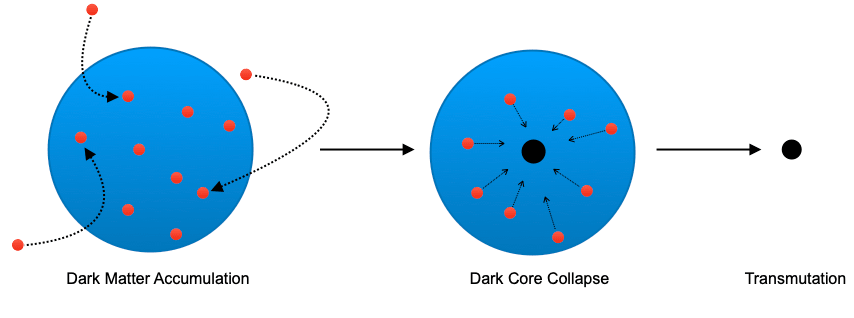Probing Non-Annihilating Dark Matter with Celestial Objects
Prepared by Anupam Ray
Cosmological observations provide unambiguous evidence of a non-baryonic form of matter, commonly known as dark matter (DM), as a dominant component of the Universe. Despite its prodigious abundance, its microscopic identity is yet to be revealed, and considered to be a major mystery in modern day science. In the absence of a convincing signal, terrestrial and astrophysical searches are placing stringent exclusions on non-gravitational interactions of DM. While some DM parameters have been excluded by these searches, many well-motivated candidates are yet to be explored. Strongly-interacting heavy DM is one such regime that remains largely untested.
The flux of Galactic DM at the terrestrial detectors falls off linearly with higher DM mass, making them inefficient for heavy DM searches. Whereas, because of the enormous sizes of astrophysical objects and their cosmologically long lifetimes, the effective exposure time is orders of magnitude larger than human-made direct detection experiments, naturally providing sensitivity to the tiny flux of heavy DM.
Strongly-interacting DM is yet another blind-spot for typical direct detection experiments. If DM particles interact too strongly with baryonic matter, they lose a significant fraction of their energies via interactions with the material in the atmosphere as well as in the Earth-cover above the underground detectors. As a consequence, they slow down significantly and can not deposit sufficient amounts of energy for detection. Whereas, stellar objects are ideal probes for strongly-interacting DM as almost all the DM particles that transit through the stellar objects get trapped, leading to a maximal sensitivity.

In this work, we demonstrate that the continued existence of a variety of stellar objects in our solar system provides stringent exclusions on strongly-interacting heavy non-annihilating DM interactions. Our proposal is simply based on the fact that non-annihilating DM particles, owing to their sufficiently strong interactions with the stellar nuclei, can accumulate efficiently inside the stellar volume. For heavy DM mass, they sink towards the stellar core and settle in a tiny core-region. Because of their prodigious abundance, and tiny core volume, their number density within the stellar core becomes tantalizingly larger, eventually resulting in a BH formation inside the stellar core. This nascent BH, if not sufficiently light, can rapidly swallow the host, destroying them to comparable mass black holes (as depicted in Figure 1). Therefore, mere existence of these stellar objects exclude such DM mass and cross-sections which predict successful destruction of the hosts. We consider several stellar objects to demonstrate their potential as DM detectors, concluding that stellar objects with relatively larger sizes and low core temperatures, such as Jupiter, can probe the maximal DM mass window.
It is also important to stress that transmutation of stellar objects has been extensively studied in the context of old neutron stars primarily because of their enormously large baryonic density as well as high compactness. However, in the optically thick (large DM-nucleon scattering cross-section) regime, non-compact objects such as the Sun, Jupiter, and Earth are more suitable detectors to probe non-annihilating DM interactions. This is simply because in the optically thick regime, almost all of the DM particles that transit through a stellar object get trapped, and therefore, the accumulation rate increases with the larger size. Since the non-compact objects possess much larger radii, the accumulation rate for non-compact objects becomes comparable or even larger than the neutron stars in the strongly-interacting regime. Quantitatively, for DM mass of 106 GeV, and sufficiently high cross-section, the accumulation rate in the Earth is comparable to that of a typical neutron star, and for the Jupiter (Sun), it is larger by a factor of 100 (105). This naturally inspires us to explore the potential of non-compact stellar objects as strongly-interacting asymmetric DM detectors, and we probe regions in the DM parameter space, which are entirely inaccessible to the existing DM searches, demonstrating the significance of our analysis.
Header photo: an artistic representation of the Solar System. WP, CC BY-SA 3.0, via Wikimedia Commons
Read More:


